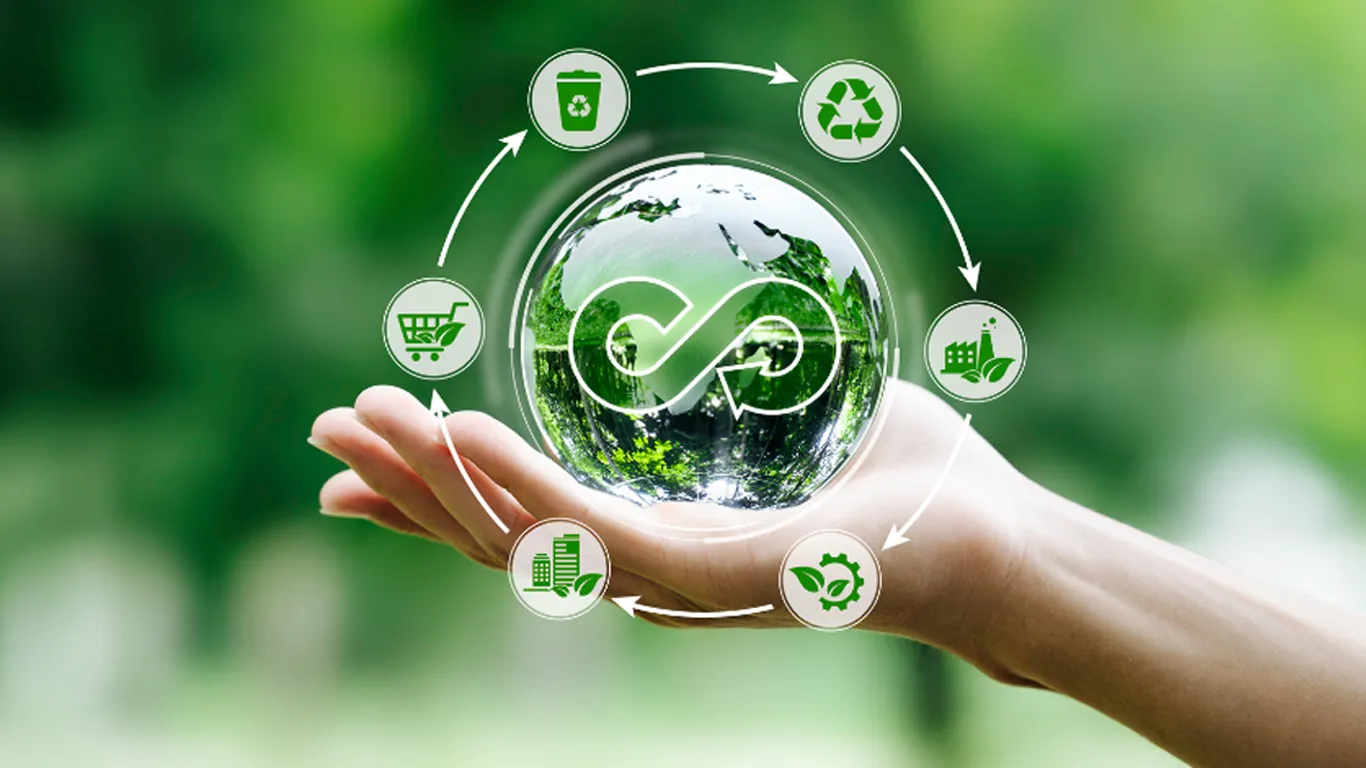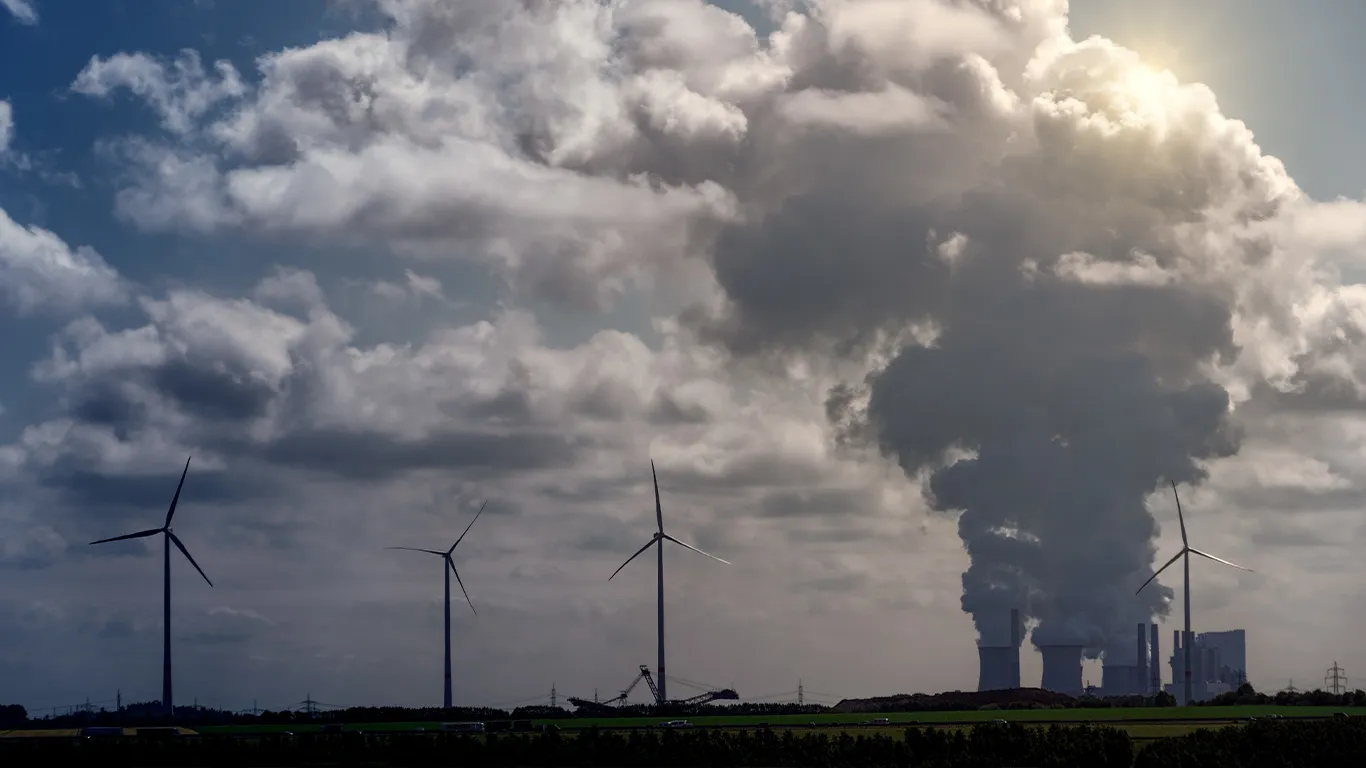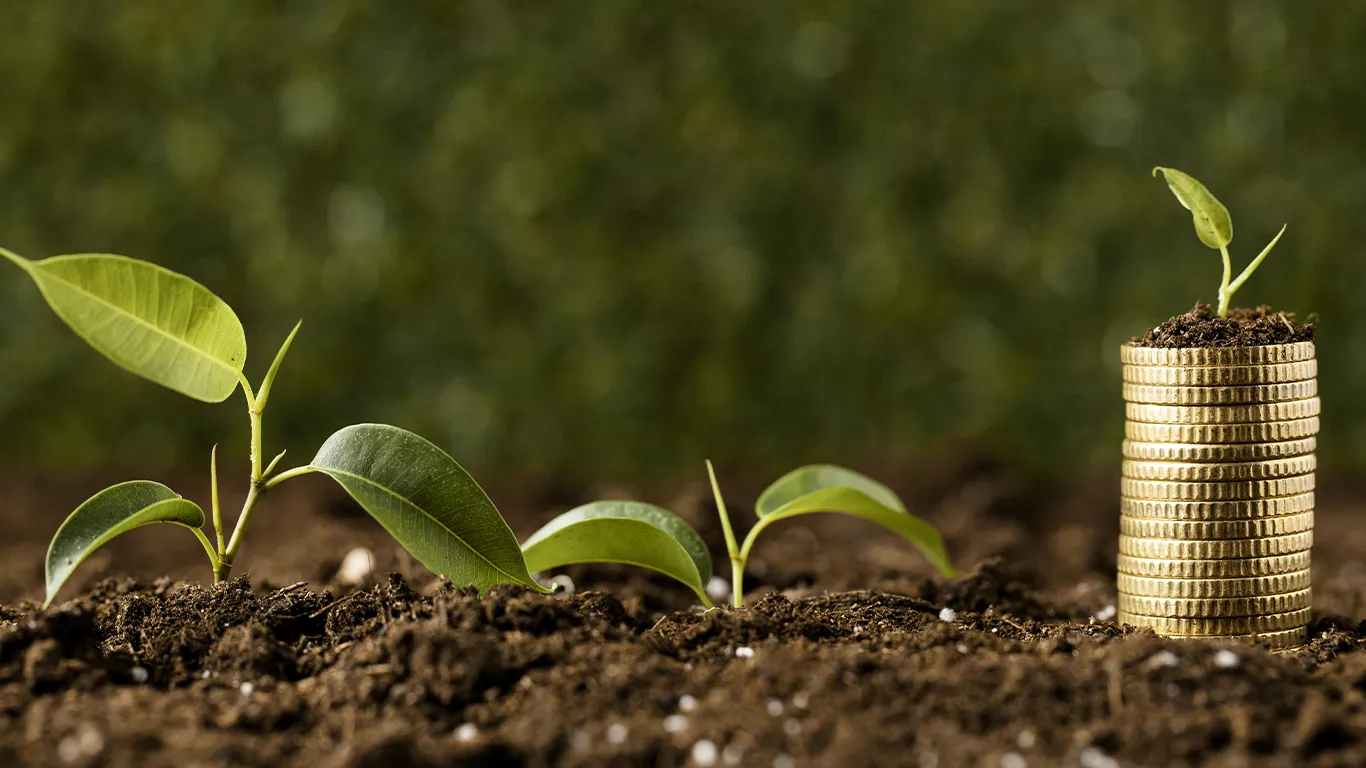
Exchange terá duplo filtro de compliance, que se somará aos padrões de certificação atuais para aumentar a robustez dos créditos de carbono negociados, explica Ludovino Lopes, advogado especialista em questões climáticas e legal advisor da plataforma
As mudanças climáticas estão cada vez mais visíveis – e tornam evidente a necessidade de reduzir ou compensar as emissões de CO2. O mercado de créditos de carbono é um instrumento poderoso para ajudar a sociedade a alcançar esse objetivo. Ele passa por um momento de transformação, com demanda por créditos de maior qualidade e confiabilidade. E a GEAP (Global Environmental Asset Platform) pretende apresentar uma resposta para isso: será uma exchange de carbono com duplo filtro de compliance dos créditos negociados na plataforma. Conversamos com o advogado Ludovino Lopes, especialista em questões climáticas e legal advisor da GEAP, sobre isso, bem como outros temas relacionados ao futuro do carbono.
Atualmente, o mercado voluntário de carbono se apoia em transações diretas entre as contrapartes. Um sistema de transações aberto e organizado, como a GEAP, muda isso – e pode trazer benefícios em termos de custo, formação de preços e transparência do processo como um todo. Na sua visão, como a GEAP poderá ajudar no desenvolvimento do setor de carbono no Brasil?
A criação ou a estruturação de uma plataforma de transação de carbono, só por si, já não é uma novidade. Agora, quando você agrega a essa plataforma algumas características, como, por exemplo, se você trouxer total transparência no processo, se você trouxer serviços que agregam a capacidade do comprador ou do vendedor poder garantir às contrapartes que elas estão comprando um ativo de alto compliance legal, de alta qualidade e estruturado, aí sim você faz a diferença.
Isto é, você deve agregar ao processo de transação que já existe em outros veículos, um conjunto de itens que garantam a confiabilidade, a robustez e a legalidade desses créditos. O item que está à venda na plataforma, na prateleira da plataforma, ele deverá passar por um conjunto de processos de compliance formalmente consagrados. Não é apenas dizer que foi certificado pelo standard A, B, C ou D. Isso não é mais suficiente.
Os standards que estão no mercado, sobretudo os standards voluntários, eles foram desenhados para fazer a certificação apenas do carbono, isto é, a certificação técnica científica do carbon accounting, digamos assim. Alguns desses standards incluíram alguns itens, por exemplo, relacionados a salvaguardas socioambientais. Então podemos dizer que alguns deles têm requisitos complementares ao carbon accounting. Eles têm requisitos onde você tem que verificar se está tendo um impacto positivo na comunidade, se tem povos indígenas envolvidos nesse projeto, ou afetados diretamente ou indiretamente. Mas nenhum desses standards avalia em profundidade a questão da legalidade do projeto e em especial da legalidade e origem dos ativos (por exemplo, a “titularidade da terra” que está na origem do projeto).
Tem uma norma lá no standard que diz demonstrar a titularidade da emissão de carbono. Ok? Fantástico. Como é que normalmente essa demonstração acontece? Através de um contrato, você leva um contrato dizendo eu tenho a titularidade do carbono que me foi concedida pelo sujeito A, B, C ou D, pela empresa A, B, C ou D. Legal, você tem um contrato. A pergunta é: esse contrato demonstra a legalidade e a titularidade do sujeito que te deu o direito? Não, na maior parte das vezes não, infelizmente.
E aí o que acontece? O standard recebe esse documento, marca uma caixa, “check the box” . E tudo o que está por trás [dele] assume que deveria ser íntegro e verdadeiro. Em alguns casos é. Mas, infelizmente, na maioria dos casos, não tem sido. E aí você vê o que está acontecendo com as notícias na mídia, exatamente por conta dessa circunstância [referência a casos como o da Operação Greenwashing, da Polícia Federal, que revelou créditos de carbono gerados a partir de grilagem].
Então, o ponto é, na verdade, o seguinte. A plataforma, a exchange, enquanto não tivermos uma lei reguladora de mercados de carbono, deveria ser o guardião do mercado. Só que para ela ser o guardião do mercado, ela precisa efetivamente assumir um conjunto de responsabilidades, que têm um alto grau de compliance e complexidade. Então ela não pode ser apenas uma plataforma, no sentido da transação tradicional do mercado financeiro, tem que ir além.
Estamos vivendo um momento muito especial, em um mercado nascente, um mercado que ainda é uma criança, que precisa crescer, que vai errar, obviamente, mas não pode errar demais para morrer no caminho. Então precisamos cuidar desse mercado, para que ele não tenha uma febre tão forte que determine o falecimento do próprio mercado. Esse é o ponto.
O mercado de carbono vive um momento de transição e maturação, tem buscado créditos que possuam maior confiabilidade e integridade. E a GEAP terá um duplo sistema de compliance dos ativos, com verificação KYC (Know Your Carbon). Como ele irá funcionar, e quais benefícios isso poderá trazer para o mercado?
O ponto fundamental é que o vendedor, por um lado, poderá submeter os seus créditos, que passarão pelo crivo da plataforma. E, do outro lado, o comprador poderá determinar qual é o grau de confiabilidade, de robustez, de “compliance”, que tipo de crédito ele quer. Ele vai ter a capacidade de poder identificar essa robustez. E, ao mesmo tempo, vai contar com um conjunto de elementos que darão suporte a essa decisão, uma decisão informada, técnica e juridicamente suportada.
Ele deverá contar com esse escrutínio [realizado pela plataforma], digamos assim, que dará um conforto para que ele tome uma decisão de aquisição do crédito, e possa trazê-lo para dentro da contabilidade da sua companhia, seja para compromissos de corporate commitments, ou para compromissos que a companhia já tenha do ponto de vista legal ou regulatório, no futuro mercado regulado de carbono no Brasil, ou até nos mercados internacionais, usando isso como crédito a ser potencialmente vendido internacionalmente.
O Acordo de Paris, assinado por 195 países em 2015, já previu a adoção de mecanismos de mercado no enfrentamento ao aquecimento global. Mas os créditos de carbono ainda são um instrumento relativamente pouco conhecido e compreendido pelo público leigo. De que forma, na sua visão, os créditos de carbono podem auxiliar no combate às mudanças climáticas?
Quando a gente está falando de crédito de carbono nesse sentido, você está falando de uma coisa chamada offsetting [compensação de emissões]. A mudança climática é um desafio que tem diversas vertentes, diversos drivers, que levam a que os efeitos negativos da mudança do clima se impactem nas nossas sociedades e na natureza. O crédito ajuda fundamentalmente de duas formas.
A primeira, na estruturação de projetos que tendem a evitar que no futuro haja um agravamento desse cenário. A gente chama isso de mitigação climática. Você vai contribuindo para uma mudança de paradigma nos processos de produção, nos processos de conservação e por aí afora. E a outra, a mais importante neste momento, uma vez que a gente já avançou demasiado na questão climática em termos do efeito estufa e da temperatura da Terra, e as mudanças estão aí, os sinais estão aí, é a possibilidade de você também contribuir para a questão da adaptação. Eu costumo até brincar. Já estamos num momento tal, que como diz o ditado popular “a vaca já foi para o brejo”. Então, agora temos que nos adaptar e criar soluções para que efetivamente seja possível diminuir o impacto [das mudanças climáticas]. O impacto já está aí, já está dado e, portanto, precisamos criar e implementar essas soluções.
Então o crédito de carbono tem essa função. Ele permite ou vai permitir que determinadas entidades que têm uma capacidade maior de fazer essas reduções ou remoções de emissões possam oferecer [isso] a outras entidades, que têm uma dificuldade maior do ponto de vista tecnológico ou do ponto de vista econômico em fazer esse esforço.
Agora, a gente não pode esquecer que o crédito de carbono foi desenhado para se tornar “obsoleto” em algum momento no tempo. A gente deveria fazer a nossa lição de casa de tal maneira que no futuro não precisemos mais dele. Esse seria o sucesso. O sucesso dele é falecer, no jargão técnico “se aposentar”. O mundo perfeito seria, em 2050, estarmos com metade do planeta descarbonizado e metade do planeta se descarbonizando, tudo equilibrado dentro da estrutura da natureza e da capacidade de regeneração dos sistemas naturais. Sabemos que esse desafio é enorme. Então, o crédito é uma das ferramentas na nossa caixa de ferramentas. Uma das mais importantes, mas não a única.
A outra ferramenta que a gente tem é a diminuição dos processos que têm intensidade de carbono, dentro do processo produtivo. E aí você vai descontando tudo que você está fazendo em termos de eficiência produtiva e redução de emissões de gases de efeito estufa para que o seu produto, lá no final, tenha menos impacto de carbono – o chamado “in setting” . Isso é o que hoje vai se defrontar com o novo regime de importação de bens na União Europeia denominado de “Carbon Border Adjustment Mechanism” [CBAM, cujo regime definitivo começa em 2026].
Então, esses dois instrumentos são os que vão fazer a nossa curva de alcance acontecer. As empresas vão poder usar a estrutura de insetting da forma mais adequada possível. As outras, que não conseguirem, certamente vão ter necessidade de usar a estrutura do offsetting.
O crédito como offsetting é um instrumento fundamental para que a mudança de paradigma econômico, produtivo e ambiental aconteça. Ele está dependendo, e isso é importantíssimo, de uma evolução legal e regulatória. Esses mercados vão se transformar, estão se transformando já, em mercados de alta intensidade legal e regulatória. Então, se a gente não tomar conta disso, digamos assim, a gente não vai conseguir trazer créditos de alta integridade, de alta qualidade, para o mercado brasileiro, para o mercado mundial, de alguma forma.
Então, esse papel central das exchanges [como a GEAP] tem alguns atores que são fundamentais nessa história. Primeiro, os standards. Segundo, os registros, que deveriam ter um papel de custódia e assegurar o papel dessa estrutura. E o terceiro, as exchanges. Como os registros ainda não estão assegurando esse papel de custódia, nem os standards estão cuidando de todos os aspectos que seriam necessários, tem que ser uma exchange a desempenhar esse papel nesse momento.
O Projeto de Lei 182/2024, que cria um mercado regulado de carbono no Brasil, está tramitando no Senado. Como o sr. vê o projeto, no estágio em que se encontra hoje, e o que o Brasil tem a ganhar com a criação do mercado regulado?
O projeto foi objeto de um esforço muito grande lá atrás, há uma década que a gente vem discutindo essa história. Ele já foi objeto, no último um ano e meio, de várias mudanças, várias versões. Eu diria que o texto que está para discussão e aprovação é aquele que foi possível trazer com as múltiplas abordagens, vamos colocar assim. Agora, ele é muito bom no que diz respeito à criação de um ETS [emissions trading system], um mercado de transação de carbono. Um cap and trade, na definição internacional. Ele escolheu o modelo do cap and trade [com limites de emissões e negociação de créditos de carbono]. Você tem vários modelos. Você pode fazer um modelo cap and trade, um modelo de taxa de carbono ou um modelo de pricing fixo, digamos assim. Então, ele escolheu o modelo que estrutura ou cria a abordagem de competitividade. Nesse lado da equação, ele é um bom projeto.
Ele tem algumas coisas que são desafiantes ainda. A primeira tem a ver com a questão da estrutura institucional e da governança que foi criada para o projeto. E, depois, algumas questões importantíssimas que precisam talvez ser lapidadas um pouco mais, sobretudo a questão da natureza jurídica dos créditos, e o processo de interação entre o mercado voluntário e o mercado regulado. Para que a gente alcance duas coisas. A primeira, as metas dentro da estrutura do mercado regulado interno, doméstico, que é aquilo que o projeto se propõe regular. Mas, fundamentalmente, uma obrigação que o país assumiu chamada NDC [Nationally Determined Contribution, compromisso de redução de emissões assumido pelos signatários do Acordo de Paris].
Então, o projeto deveria estar sendo visto de forma integrada, harmonizada com um primeiro nível, que é o esforço interno, nacional, em termos de mercado doméstico. E depois um segundo nível, que é a contribuição desse esforço para o alcance da NDC e dos itens 6.4 e 6.2 do Acordo de Paris. Então, ainda temos um bocado de coisas que a gente precisa avaliar, analisar e colocar dentro dessa estrutura.
O projeto tem algumas características interessantes. Trouxe para dentro de si parte da previsão do mercado voluntário, com a questão do registro [de carbono]. Ele tem um sistema que permite fazer a transição do crédito voluntário, para ele ser aceito dentro do mercado regulado.
Essa interoperabilidade é bastante importante. A gente vai precisar trabalhar ainda bastante para criar, sobretudo, essa interoperabilidade interna e internacional. Porque só vamos conseguir ganhar esse jogo se tivermos uma escala de recursos financeiros significativos, e parte desses recursos terá que vir do cenário internacional. Então, para isso, você precisa ter a mesma linguagem. Você precisa trabalhar numa taxonomia em que aquilo que está definido internamente se conecte com os conectores do mercado financeiro e do mercado de carbono internacional. Não dá para a gente criar uma figura jurídica que não conecte com nada.
Em 2026, começará a valer o regime definitivo do CBAM (Carbon Border Adjustment Mechanism). Na sua visão, qual será o impacto dele sobre os exportadores brasileiros – e sobre o mercado de carbono no Brasil?
São dois impactos diferentes. O primeiro impacto não é nem sobre os exportadores brasileiros, é sobre as tradings. As tradings são aquelas entidades que vão ter que explicar à União Europeia a composição dos seus produtos. São elas que estão na frente dessa questão. Então, vai haver, sim, um impacto grande. Primeiro nessa pauta de produtos que está lá colocada. Cimento, minério, siderúrgicas, fertilizantes. Serão os primeiros setores a enfrentar esse desafio. Mas existe um risco de que isso se espelhe depois nas outras commodities, soja, carne, por aí afora.
Então, o primeiro impacto é o seguinte. Mesmo que você exporte, por exemplo, para a China, se o teu produto final for vendido na cadeia da destinação final para a Europa… O pessoal está falando que é só quem vende [diretamente] para a Europa que vai [ser impactado]. Não. I’m sorry. Não é assim que o comércio internacional e o mundo conectado funcionam, tem um outro requisito na jogada chamado “traceability”, ou rastreabilidade da origem do produto, que recebeu recente regulação nos diversos sistemas de certificação e em especial no contexto do mercado europeu. Se o teu produto final for parar lá, de alguma forma [estará sujeito ao tema de rastreabilidade e ao CBAM]. Esses são os primeiros pontos.
O ponto subsequente é que a tendência neste momento é que vários países no mundo adotem essas formas de proteção também. Não apenas a Europa. Os Estados Unidos estão discutindo o CBAM, a Austrália está discutindo o CBAM, o próprio Brasil está discutindo um CBAM interno. Então, vamos ter um mundo, sim, cada vez mais impactado por uma moeda chamada carbono.
As empresas que vão ganhar esse jogo serão aquelas que estiverem em países onde a pegada de impacto de carbono for menor. Hoje o CBAM olha apenas o Escopo 1, mas o maior desafio está sobretudo no Escopo 2, que é o escopo energia. Não podemos esquecer que o CBAM, neste momento, só concentra o Escopo 1 [as emissões geradas diretamente pela produção das mercadorias]. Então você terá que fazer a leitura do impacto primeiro naquelas empresas, naqueles setores que têm uma dificuldade no Escopo 1, em termos de impacto de carbono.
Depois, a gente vai ter provavelmente o Escopo 2, e sabe-se lá quando, o Escopo 3 [que inclui as emissões derivadas do consumo, transporte e descarte dos produtos]. Então a leitura do impacto tem que ser feita de acordo com essas características. Tem alguns setores que têm mais dificuldade em fazer, digamos, o CBAM [insetting] na sua estrutura de impacto do Escopo 1. Isso vai crescer depois para o Escopo 2 e Escopo 3.
Onde o Brasil tem maior competitividade é no Escopo 2, por conta da nossa energia renovável. Então, essa é a análise. A primeira análise é nos setores que têm essa dificuldade. Eles, sem dúvida, vão ser bastante impactados.
No mercado de carbono, o impacto do CBAM é o seguinte. À medida que a legislação do CBAM for apertando, você vai ter que ter mais crédito de carbono para compensar aquilo que você não conseguiu fazer no insetting. E, aí, isso vai depender da aceitabilidade do regulador europeu, se ele aceita offsetting [uso de créditos de carbono para compensar emissões] dentro do teu insetting. Isso somado vai determinar o teu “preço de carbono” – Carbon Pricing – e logo a tua competitividade.
Por isso, é fundamental trabalharmos em conjunto para trazer robustez, integridade e compliance para o mercado de carbono, começando por implementar ferramentas e soluções tais como as que a GEAP estará trazendo para o País.




